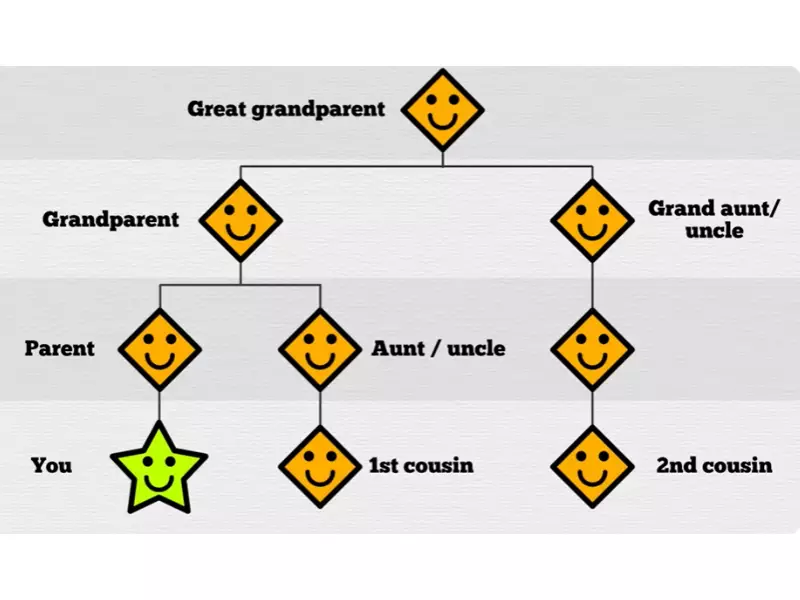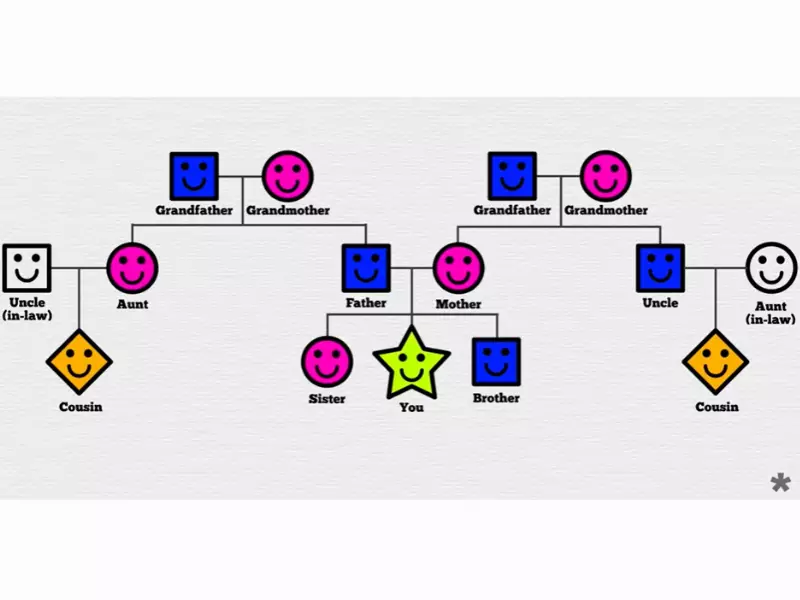Exploring the dynamics of family relationships can often reveal fascinating insights into our heritage and personal identity. A particular curiosity arises when we consider the connection between different family members, specifically the relationship between one’s kips and cousin. This relationship, though seemingly straightforward, holds layers of genealogical significance and cultural interpretations.
The term “kips” does not have a widely recognized definition in the context of familial relationships, which may lead to confusion or misinterpretation. However, if we consider “kips” as a typographical error or a colloquial term inadvertently used in place of a more commonly understood term relating to family relationships, we can proceed to discuss the traditional relationship between oneself and a cousin. Cousins are relatives with whom one shares common grandparents; they are the children of one’s aunt or uncle.
Diving deeper into the fabric of family trees, cousins represent our closest relatives outside of our immediate nuclear family. The connection shared with cousins extends beyond mere genetic ties; it encompasses shared family history, experiences, and memories. This relationship can vary significantly from one family to another, influenced by factors such as geographical distance, cultural practices, and individual family dynamics.

Kinship Basics
Definitions and Terms
When exploring family relationships, it’s crucial to start with the basics. Two terms often come up: “kips” and “cousin”. Understanding these terms lays the groundwork for deeper insights into family dynamics.
Clarifying “Kips” in Family Relationships
The term “kips” is less commonly encountered in discussions about family relationships. Its appearance might sometimes be due to a typographical error or miscommunication. For the sake of clarity in this discussion, we will focus more on the established term “cousin” and its implications in family connections.
Defining “Cousin”
A cousin is someone with whom you share at least one set of grandparents. This relationship is a foundational element of extended family networks, offering a broad field for exploration within genealogy.
Types of Cousins
Understanding the various types of cousins is essential for navigating family relationships and constructing accurate family trees.
First, Second, Third Cousins
- First cousins share a set of grandparents.
- Second cousins share great-grandparents but not grandparents.
- Third cousins have great-great-grandparents in common, without sharing great-grandparents.
Once Removed, Twice Removed
- “Once removed” indicates a one-generation difference. For example, your cousin’s child is your first cousin once removed.
- “Twice removed” denotes a two-generation gap, such as the relationship between you and your cousin’s grandchild.
Analyzing Kinship
Genetic Links
Cousins share DNA passed down from shared ancestors. This genetic connection is a tangible link to our past, reflected in our biological makeup.
Shared Ancestors and DNA
Understanding how cousins are related biologically involves looking at the genes inherited from common ancestors. These shared genes are markers of our familial ties.
How Cousins Are Related Biologically
Cousins’ biological relationship is quantifiable, with first cousins typically sharing about 12.5% of their DNA, a reflection of their shared grandparents.
Cultural Perspectives
Variations in Cousin Relationships Across Cultures
Cousin relationships can vary widely, influenced by cultural practices. In some cultures, cousins are considered close family members, akin to siblings, while in others, they may be less central to family life.
Significance in Social Contexts
The role of cousins in the family can have significant social implications, affecting inheritance, social status, and even marriage practices in various cultures.
The Kips Connection
Kips in Family Trees
Given the ambiguity surrounding the term “kips,” this section aims to demystify its placement in family trees, focusing instead on the more clearly defined relationships among cousins.
Positioning Kips in the Genealogical Chart
While “kips” may not directly relate to traditional genealogical terminology, understanding where cousins fit within a family tree offers valuable insights into our ancestral connections.
Relation to Cousins Explained
The connection between cousins is a testament to the network of kinship that spans generations, providing a living history of familial bonds.
Kips and Cousins: A Closer Look
Exploring Specific Scenarios
Examining specific family scenarios can illuminate the complexities and nuances of cousin relationships, offering a practical understanding of how these connections manifest in real life.
Visual Diagrams of Relationships
- Visual aids and diagrams can significantly aid in understanding the precise nature of relationships between cousins, including those once or twice removed.
- Diagrams illustrating the connections between different types of cousins can provide a clear, visual representation of these familial links, making it easier to grasp the concept of removed cousins and the extent of shared ancestry.

Legal and Social Implications
Inheritance Rights
In many cultures, the legal framework surrounding inheritance has traditionally favored direct descendants and immediate family members. However, cousins and other more distant relatives can sometimes find themselves entangled in matters of succession and inheritance, particularly in the absence of a will or clear legal directive.
- Cousins may have legal standing in inheritance disputes, especially if the deceased relative did not leave a will.
- The concept of kips in this context could refer to kinships that influence inheritance rights under specific legal systems, highlighting the importance of understanding familial ties.
Social Norms and Taboos
The topic of cousin marriage varies widely across cultures, with it being completely acceptable in some and taboo in others. This division often reflects deeper societal values and norms regarding kinship and marital practices.
- In some cultures, cousin marriages are encouraged to strengthen family ties and preserve wealth within the family.
- Kips could play a role in these traditions, potentially representing a degree of kinship where marriage is either more acceptable or more frowned upon, depending on the culture.
Modern Family Dynamics
Genealogy and Ancestry Searches
The rise of digital technology has revolutionized the way we explore our family trees, making it easier than ever to trace links to cousins and potentially kips.
- Online databases and DNA testing services allow individuals to uncover distant relatives and ancestral connections, highlighting the interconnectedness of family networks.
- The exploration of kips in this digital age can reveal previously unknown familial ties, offering new insights into one’s heritage and lineage.
The Changing Face of Family
The definition of family is constantly evolving, influenced by social changes, technological advancements, and shifts in cultural attitudes.
- Modern relationships often challenge traditional notions of kinship, leading to a broader understanding of what constitutes a family.
- The significance of understanding diverse family ties, including those between cousins and kips, lies in recognizing the varied forms love and connection can take in the contemporary world.
FAQs
How are cousins related?
Cousins share at least one set of grandparents. In the case of first cousins, your parents and your cousin’s parents are siblings, making you related through your shared grandparents.
Can cousins have different degrees of relation?
Yes, cousins can have different degrees of relation. First cousins share grandparents, second cousins share great-grandparents, and so on, indicating a further step removed in the family tree for each degree.
Is the cousin relationship important in genealogy?
Absolutely, the cousin relationship plays a significant role in genealogy. It helps trace lineage and connect distant family members, offering a broader understanding of family heritage and ancestral connections.
How do cultural differences affect cousin relationships?
Cultural differences can greatly impact cousin relationships, with some cultures placing a strong emphasis on maintaining close ties with extended family, including cousins, while others may not stress these relationships as strongly. These cultural practices influence how individuals relate to and interact with their cousins.
Conclusion
The relationship between oneself and a cousin embodies a unique blend of genetic connection, shared heritage, and personal history, forming an integral part of one’s family mosaic. This bond, while defined by biological ties, is often enriched by the shared experiences and memories that knit the fabric of family life.
As we conclude, it’s clear that the exploration of cousin relationships offers more than just an understanding of familial ties; it opens a window into the complexities of human connections and the myriad ways in which our families shape our identities and experiences. Embracing these relationships can enrich our lives, offering a sense of belonging and a deeper connection to our roots.
